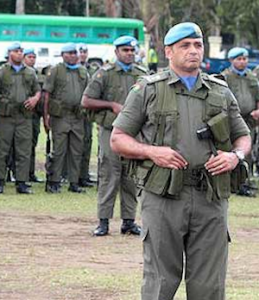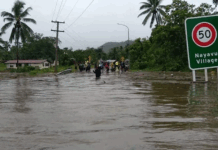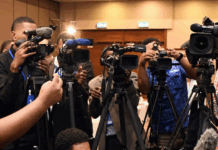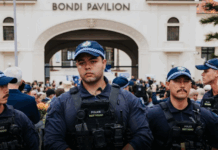
From Evening Report
By New Zealand-based security analyst Dr Paul Buchanan
Last week Fiji took delivery of a shipment of Russian weapons that were “donated” by Russia pursuant to a bilateral Memorandum of Understanding (MOU) signed in February 2015.
The Fiji government says the weapons are needed by Fijian peacekeepers in regions like the Middle East because what they currently have in their inventory are obsolete.

The shipment includes small arms (squad) weapons, two trucks, tear gas, other non-lethal munitions and possibly a helicopter.
The shipment will formally be unveiled in February in front of a Russian delegation that will include military trainers who will remain in the country to instruct Republic of Fiji Military Forces (RFMF) personnel in their proper use.
Fijian Opposition figures believe that the shipment is illegal because it was not approved by Parliament and that it could be used against domestic opponents of the current military-backed elected government.
The issues
Let me briefly outline the issues:
The shipment is perfectly legal, as it is not part of a treaty that needs parliamentary ratification. Plus, it is a “donation” of military aid so it does not need parliamentary approval.
It is not clear that the formal unveiling will reveal all of the weapons delivered. It is quite possible that some or most of the shipment will be concealed.
The Opposition is correct to be concerned about the ”dual use” potential of the weapons.

Squad weapons, tear gas and non-lethal munitions can be used in peacekeeping but can also be used as instruments of crowd control at home.
Given the RFMF’s history, that is a very real possibility.
The arms shipment could trigger an arms race with Tonga, which also has a military and is a rival of Fiji.
The Tongans are not likely to view the shipment kindly even if it does not specifically include naval equipment. Squad weapons can and are used by navies as a matter of routine.
Although Fijian military inventories may well be obsolete, most UN peacekeeping missions are armed by the UN using NATO-standard equipment.
That includes small arms and troop carriers used in “blue helmet” operations. Thus the claim that the Russian arms are needed for peacekeeping is debatable at best.
The MOU with Russia also outlines military educational exchanges. These follow on a similar programme with the Chinese military (PLA).
The Chinese also have funded and undertaken numerous infrastructure projects such as port dredging and road building that have a parallel “dual use” potential: they can be used for civilian and military purposes alike.
The sum result of this is that the strategic balance in the South Pacific is clearly in flux. Given the US “pivot” to Asia and the reassertion of its security ties with Australia and New Zealand, that is bound to result in increased diplomatic tensions and gamesmanship in the Western Pacific in the years to come.
For the full report, go to: 36th-Parallel.com for Asia-Pacific analysis.
36th Parallel Assessments is a non-partisan, non-governmental geopolitical risk and strategic analysis consultancy. Located in Auckland, New Zealand, 36th Parallel Assessments offers tiered political risk, market intelligence and strategic forecasting services. It combines open source intelligence and trend analysis, qualitative subject studies and targeted research on matters of economic, political and social import from a South Pacific perspective. In doing so 36th Parallel Assessments serves as a window on national and regional trends, including the activities of extra-regional powers and actors in the Trans-Pacific context.









































